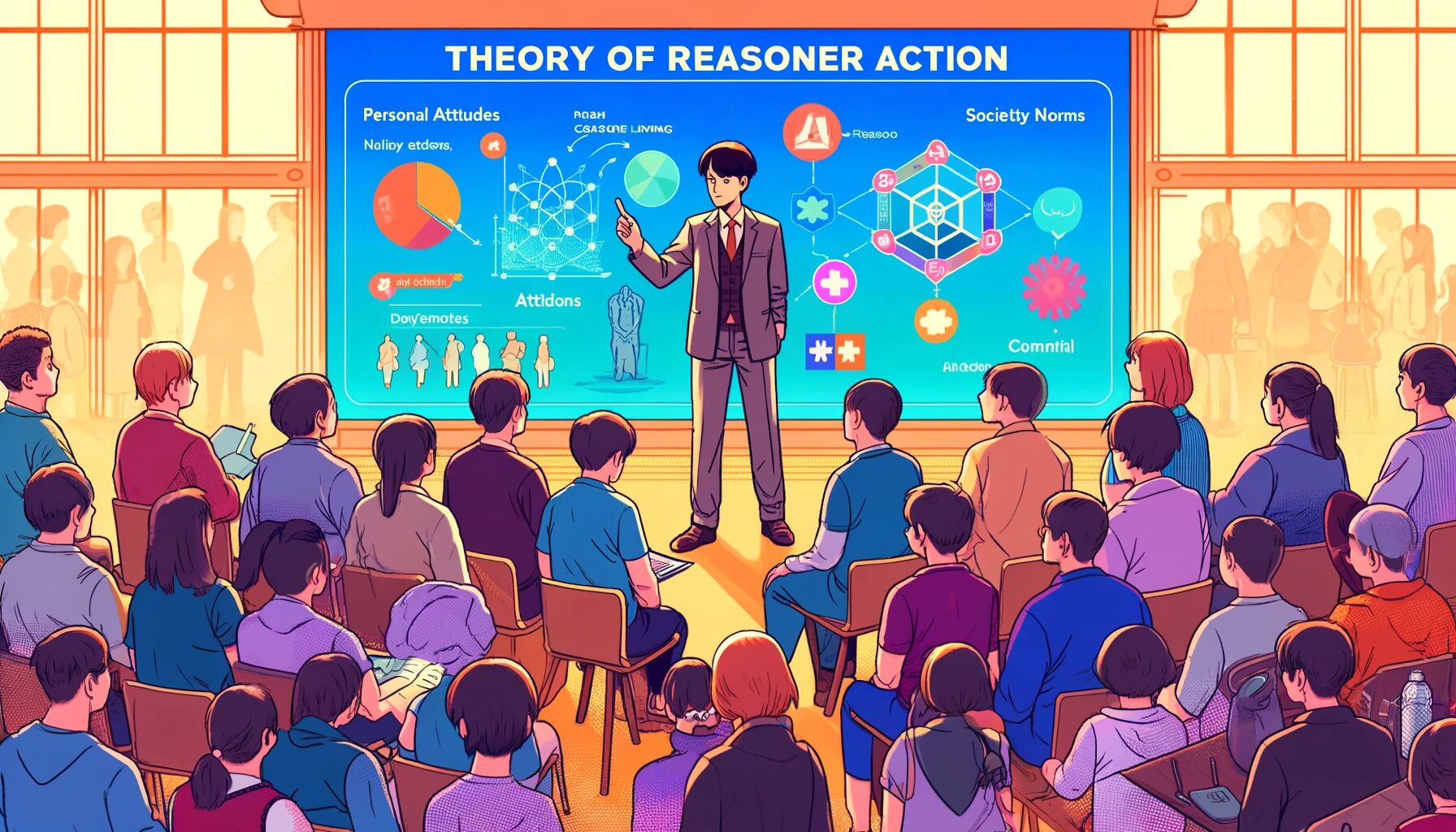What is Theory of Reasoned Action?

The Theory of Reasoned Action (TRA) is a theory used in psychology to predict how individuals will behave based on their pre-existing attitudes and behavioral intentions.
Developed by Martin Fishbein and Icek Ajzen in the 1970s, TRA posits that an individual’s behavior is determined by their intention to perform the behavior, which is itself influenced by their attitude toward the behavior and subjective norms surrounding it.
Books on “Theory of Reasoned Action”

Here’s how it works, step-by-step:
- Attitude Toward the Behavior: This refers to the personal evaluation of the behavior (positive or negative).
- Subjective Norms: These are the perceived social pressures to perform or not perform the behavior.
- Behavioral Intention: This is the motivational factor that captures the decision to perform a behavior and directly leads to the action.
TRA has been widely applied in various fields including health services, marketing, and environmental conservation, helping to understand and predict why people behave the way they do in specific situations.
Books on “Theory of Reasoned Action”
Explanation with Concrete Examples!
Health Behavior Changes
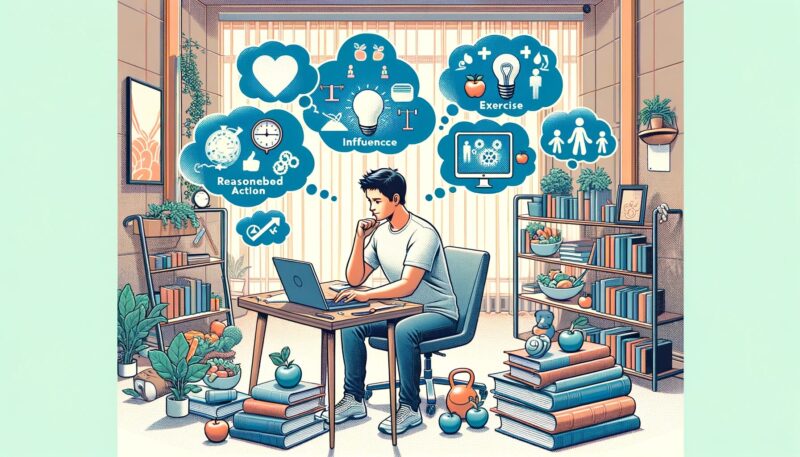
In the bustling city of Tokyo, Yuya-san, a dedicated health enthusiast and a popular blogger, faced a significant challenge.
Despite his personal commitment to a healthy lifestyle, he noticed that many of his friends and blog readers were struggling to adopt similar habits.
Motivated to make a difference, Yuya-san decided to use the Theory of Reasoned Action to influence their behavior positively.
Yuya-san started by surveying his audience to understand their attitudes towards health and fitness.
Books on “Theory of Reasoned Action”
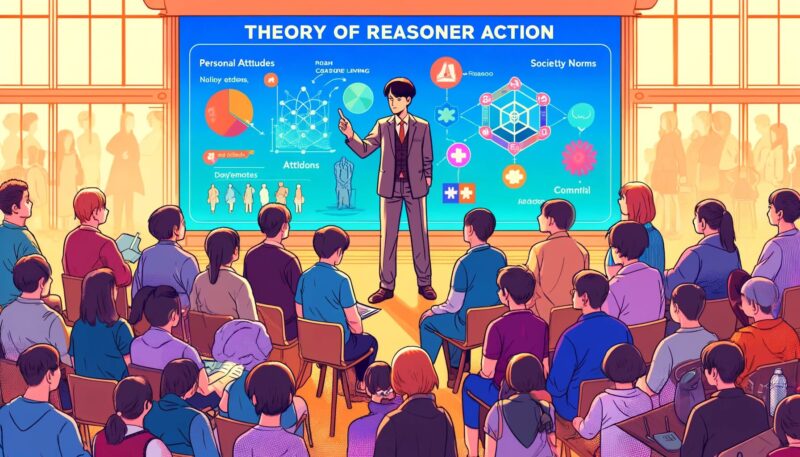
He discovered that while many had a favorable view of healthy living, they felt pressured by their busy schedules and social environments, which often prioritized convenience over health.
To tackle this, Yuya-san crafted a series of blog posts that not only highlighted the personal benefits of health behaviors but also addressed the subjective norms.
He shared stories of individuals who successfully balanced busy lives with healthy habits, effectively using peer influence to shift the perceived social norms.
By strategically displaying how both attitudes and social pressures can be aligned for a healthier lifestyle, Yuya-san aimed to create a ripple effect, encouraging his readers to make more informed and positive health decisions.
Books on “Theory of Reasoned Action”
Environmental Decisions
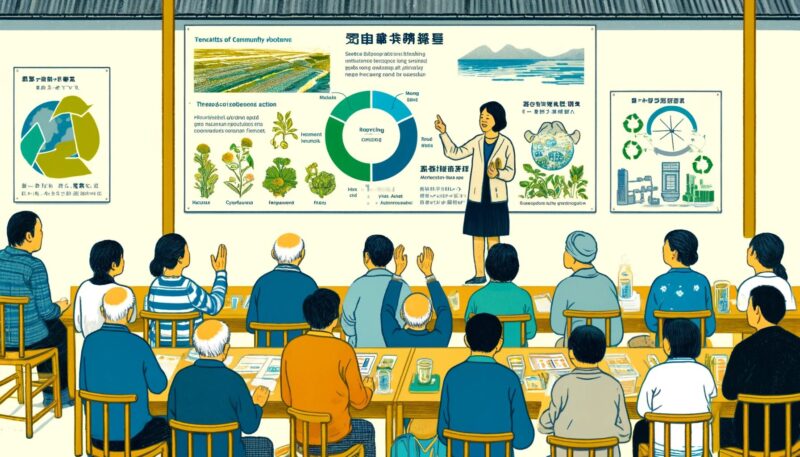
In a small town on the outskirts of Kyoto, a local environmental activist named Haruka faces a challenge in persuading her community to support a new recycling initiative.
Despite the community’s general appreciation for nature, their recycling rates are low due to a lack of understanding and perceived inconvenience.
Haruka uses the Theory of Reasoned Action to guide her strategy.
She begins by educating her community about the environmental benefits of recycling through local meetings and newsletters.
She emphasizes how individual actions contribute to a larger goal of sustainability, aiming to shift attitudes positively.
Books on “Theory of Reasoned Action”

Next, Haruka addresses the subjective norms by showcasing neighboring towns where recycling programs have led to cleaner streets and reduced waste.
She invites speakers from these towns to share their positive experiences, thereby altering the community’s perception of the social norms associated with recycling.
By intertwining the change in personal attitudes and the adjustment of perceived social pressures, Haruka hopes to increase the recycling rates in her town, demonstrating how the Theory of Reasoned Action can be applied to environmental decision-making.
Books on “Theory of Reasoned Action”
Marketing Strategies

In the bustling metropolis of Osaka, a young marketing strategist named Kenji is tasked with launching a new smartphone app designed to improve urban commuting.
The app integrates traffic updates, public transportation schedules, and ride-sharing options.
Kenji understands that simply building a functional app isn’t enough; he needs to influence potential users’ behaviors to adopt it.
Using the Theory of Reasoned Action, Kenji focuses on changing attitudes and adjusting social norms.
Books on “Theory of Reasoned Action”
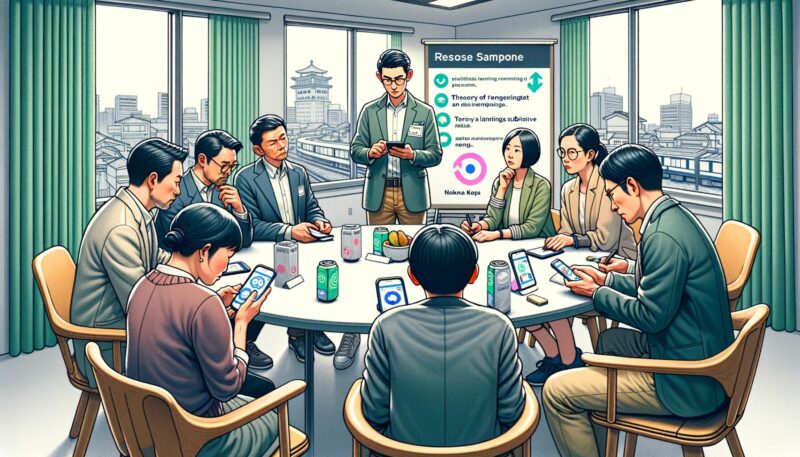
He starts by conducting online surveys to gauge the city dwellers’ current commuting frustrations and their openness to using technology for better commuting solutions.
Next, Kenji launches a targeted advertising campaign featuring local celebrities and influencers who demonstrate the app’s benefits in their daily lives, thus addressing the subjective norms.
These influencers share their positive experiences on social media, showing how the app saves time and reduces stress, which helps shift public perception and encourages wider adoption.
Kenji’s efforts illustrate how marketing strategies, informed by the Theory of Reasoned Action, can effectively change consumer behavior by simultaneously targeting personal attitudes and societal norms.
Books on “Theory of Reasoned Action”
Summary
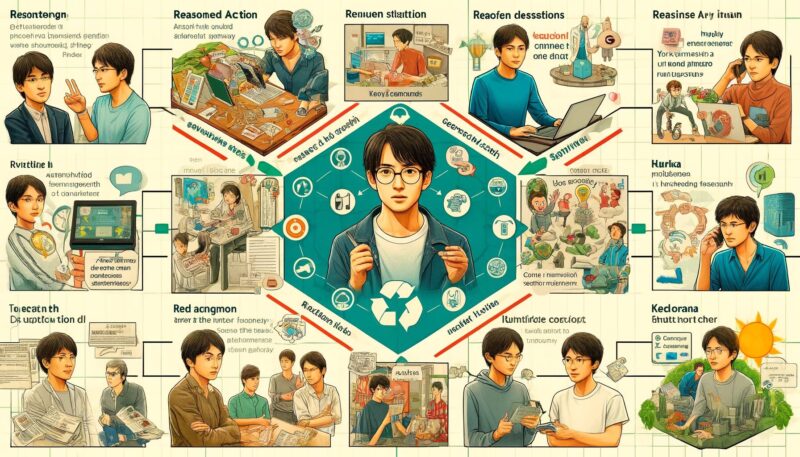
The Theory of Reasoned Action (TRA) has been applied in various scenarios to understand and influence human behavior effectively.
- Health Behavior Changes: Yuya-san used TRA to influence his blog readers by addressing both personal attitudes and the subjective norms about health. Through informative blog posts and social proof from peers, he aimed to change behaviors towards healthier lifestyles.
- Environmental Decisions: Haruka applied TRA in her community to boost recycling efforts. By educating the community and showcasing successful examples from neighboring areas, she adjusted both the personal attitudes and the perceived social norms regarding recycling.
- Marketing Strategies: Kenji implemented TRA to launch a new smartphone app in Osaka. Through surveys, targeted advertising, and direct interaction with potential users, he worked on aligning consumer attitudes and societal expectations to encourage app adoption.
Books on “Theory of Reasoned Action”
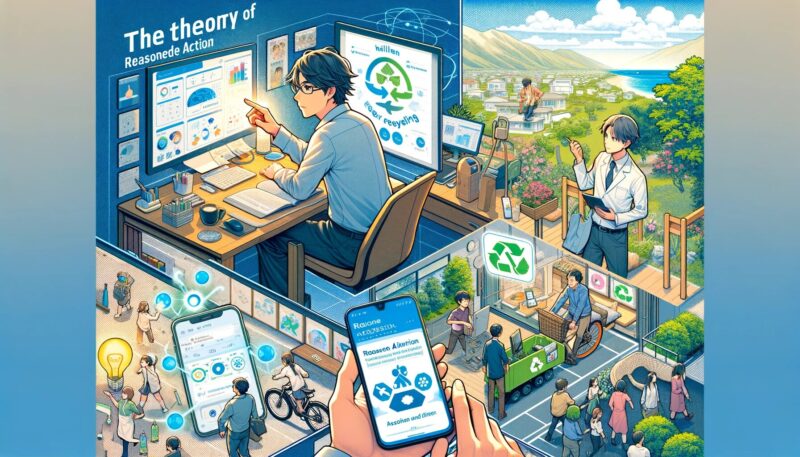
These examples illustrate how TRA can be adapted to different contexts, demonstrating its utility in predicting and shaping behaviors by focusing on attitudinal changes and normative beliefs.
Books on “Theory of Reasoned Action”
This article uses material from the Wikipedia article “Theory of Reasoned Action” which is released under the Creative Commons Attribution-Share-Alike License 4.0. Additionally, the texts and images were generated using ChatGPT.

